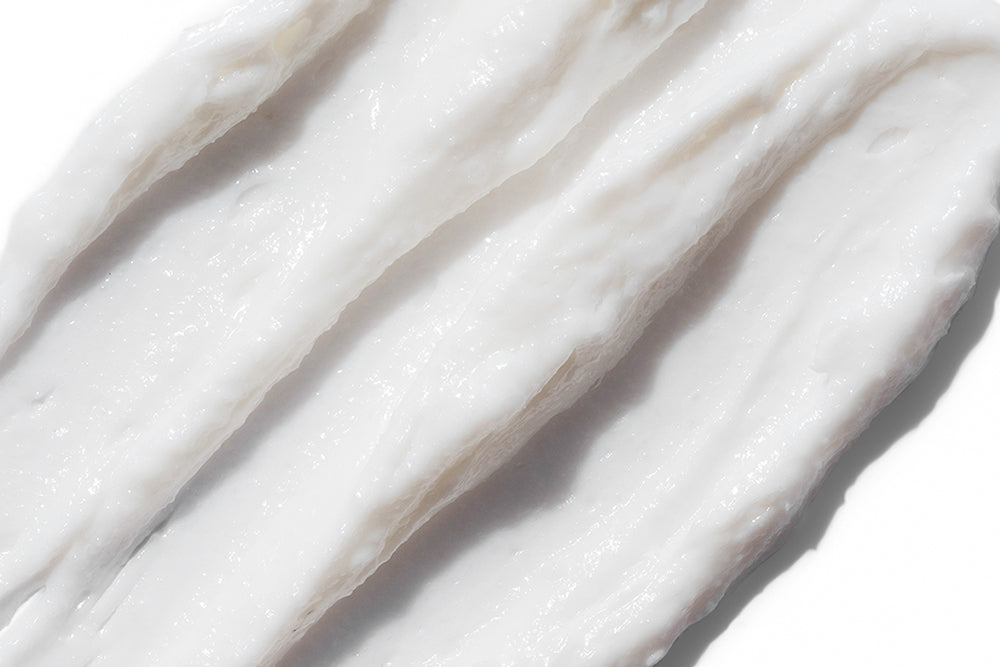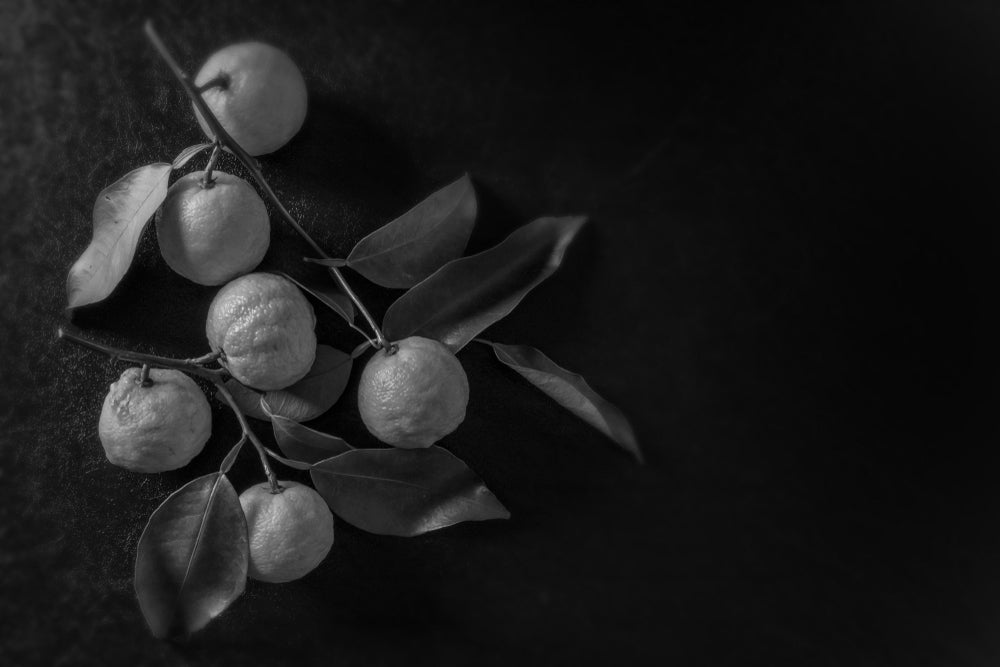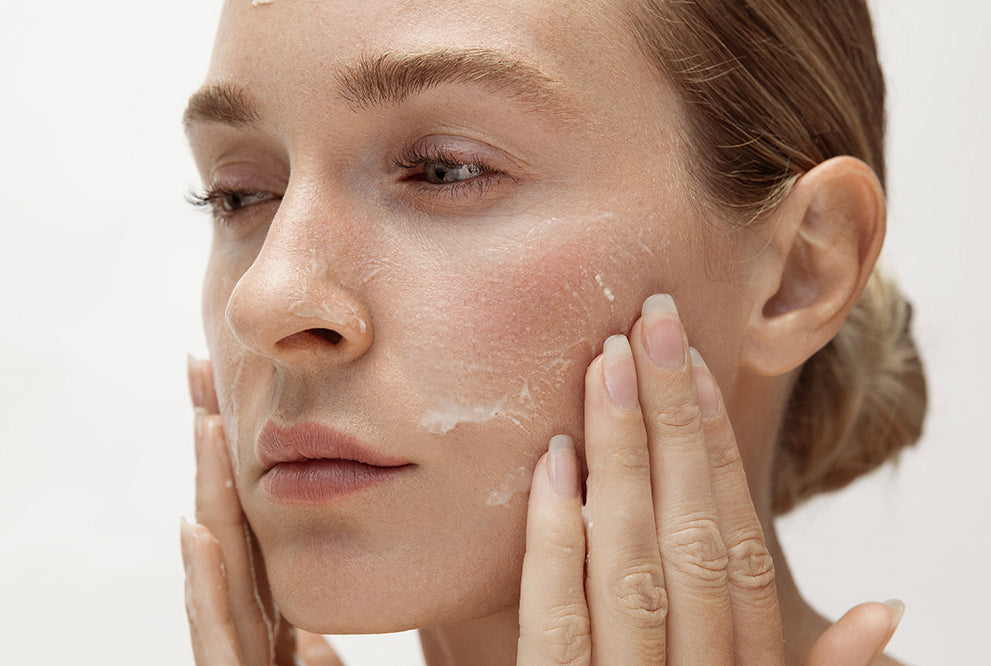
about exfoliation

the bottom line
If you don’t routinely exfoliate your skin, you’re missing out on one of the most effective steps towards skin health. While young children naturally replace their skin cells rapidly, the rate of cell turnover slows down as we age. Dead skin cells which accumulate on the face can accentuate the appearance of fine lines and contribute to dull skin tone. Exfoliation lifts dead skin cells, allowing the rest of your products to penetrate more evenly and effectively, and results in more even skin tone and a smoother texture. Read on to learn about this critical step in your skincare routine.
first layer: what is exfoliation?
Exfoliation is the removal of dead skin cells from the outer layer of the skin. Exfoliation can be performed through one of two methods, chemical or mechanical. In mechanical exfoliation, a tool or a scrub is used to physically remove dead skin cells. Chemical exfoliation, in contrast, uses chemicals such as acids or enzymes to dissolve dead skin cells.
Chemical exfoliants include alpha hydroxy acids (AHAs), beta hydroxy acid (BHA), and enzymes. AHAs are water-soluble acids derived from natural ingredients, including fruit, milk (lactic acid), and sugar (glycolic acid). They exert their effect by penetrating the stratum corneum to loosen the bonds between dead skin cells, and are ideal for those with oily skin. BHA, or salicylic acid, is an oil-soluble acid with keratolytic properties which allows skin cells to be shed. This is an especially effective acid for acne-prone skin. In contrast, enzymes from natural sources including papaya, pineapple, and pomegranate function in a manner similar to acids, but they are generally gentler and therefore preferred for more sensitive skin.
Physical or mechanical exfoliation uses a tool such as a washcloth or loofah, or grains that physically remove dead skin cells and build-up on the skin. The ideal physical exfoliant for you is dependent upon your skin’s thickness and sensitivity. Larger granules such as pumice, sand, sugar, and salt, tend to be more abrasive, and are appropriate for the body and thicker, oilier skin. Smaller granules such as those found in some clays, jojoba beads, rice, and bamboo tend to gently buff the skin, and are an excellent choice for the face, especially for those with dry or sensitive skin. While crushed seeds and nutshells are also used as physical exfoliants, they can possess irregular edges and shapes which create micro-tears in the skin.
Both chemical and physical exfoliants can be used to enhance each other’s benefits, but never on the same day to prevent over-exfoliation and injury to the skin barrier.
second layer: the benefits of exfoliation
As noted earlier, our skin’s ability to turn over new skin cells slows as we age. Daily dead skin cell accumulation makes fine lines and wrinkles more noticeable and contributes to dull and uneven skin and clogged pores. Exfoliation ensure that these dead cells are removed, contributing to skin health.
There are several excellent cosmetic benefits to exfoliation as well:
- fine lines and wrinkles are less visible,
- pores are unclogged and pores appear to be smaller,
- hyperpigmentation is decreased by the removal of dead skin cells containing pigment,
- exfoliation promotes improved absorption of other skin products by removing the top layer of dead cells, and
- collagen synthesis is stimulated, improving the skin’s texture.
third layer: how to exfoliate
Now that you’ve made the brilliant decision to incorporate exfoliation into your skin routine, you need to take a few precautions to ensure that you’re also adequately protecting your skin:
- review your products with active ingredients such as retinoids or benzoyl peroxide. Exfoliation will irritate your skin and potentially cause breakouts if used on the same day.
- next, evaluate your skin type. Very dry and sensitive skin may respond better to a light chemical exfoliant, while oily skin tolerates stronger chemical and mechanical exfoliation. If your skin is dark or you tend to form pigment with injury to the skin, avoid aggressive exfoliation. Never exfoliate over sunburnt skin, cuts, or open wounds.
- exfoliate in the morning. Technically, you can exfoliate at any time of day, but the morning is ideal because skin repairs itself at night, leaving a layer of dead skin cells ready to be removed. The heat from a warm shower opens the pores for an even deeper clean.
- apply a small amount of the physical exfoliant to clean skin using small, circular motions for 1-2 minutes then rinse off with lukewarm water. If you are using a chemical exfoliant, follow the instructions closely and do not leave on for longer than recommended.
- moisturize! You’ve just removed a layer of skin cells and your skin will be craving some hydration. Apply a light serum, lotion, or cream after exfoliating.
- don’t over-exfoliate. The frequency of exfoliation is determined by your skin type and the degree of exfoliation. If you use a more aggressive chemical or mechanical scrub, exfoliate less often. If you use a gentler method, your skin may tolerate treatment every 2-3 days, or even daily. Over-exfoliation can create micro-tears of the skin which in turn allow bacteria to enter the surface and induce inflammation with redness, irritation, and dry skin. More is not more, in this case (side-eye at the New Yorkers in the room).
fourth layer: how we do it
We’re big believers in exfoliation for both its sensory and physical benefits – there’s nothing quite like renewing your skin’s layers in a warm shower early in the morning. Our bamboo & yuzu facial scrub incorporates organic rice flour, bamboo extract, and yuzu oil to reveal your brightest and smoothest skin yet.
All this and more at www.anokhaskincare.com .
xx
anokha
references:
- https://www.aad.org/public/everyday-care/skin-care-secrets/routine/safely-exfoliate-at-home
- https://www.dermstore.com/blog/exfoliation-definition-and-benefits/
- https://www.byrdie.com/how-to-exfoliate-best-exfoliating-tips-for-the-face-and-body-345926
- https://www.byrdie.com/how-often-should-i-exfoliate-my-face
definitions:
exfoliation: the removal of dead skin cells from the outer layer of the skin
skin barrier: the skin barrier protects against external agents including mechanical and chemical insults, heat, pathogens, water, and radiation.
faq’s:
what is exfoliation?
exfoliation is the removal of dead skin cells from the outer layer of the skin.
what is mechanical exfoliation?
physical, or mechanical, exfoliation uses grains that physically remove dead skin cells and build-up on the skin.
what is chemical exfoliation?
chemical exfoliation uses chemicals such as acids or enzymes to dissolve dead skin cells.
why do I need to exfoliate?
dead skin cells which accumulate on the face can accentuate the appearance of fine lines and contribute to dulled skin tone. exfoliation lifts dead skin cells, allowing the rest of your products to penetrate more evenly and effectively for more even skin tone and a smoother texture.
can I alternate between exfoliants?
as long as your skin does not become red or irritated, you can alternate between mechanical and chemical exfoliants. just be sure not to use them on the same day.
how often should I exfoliate?
it’s generally recommended that exfoliation of the face be performed 2-3 times per week.



Laisser un commentaire
Ce site est protégé par hCaptcha, et la Politique de confidentialité et les Conditions de service de hCaptcha s’appliquent.